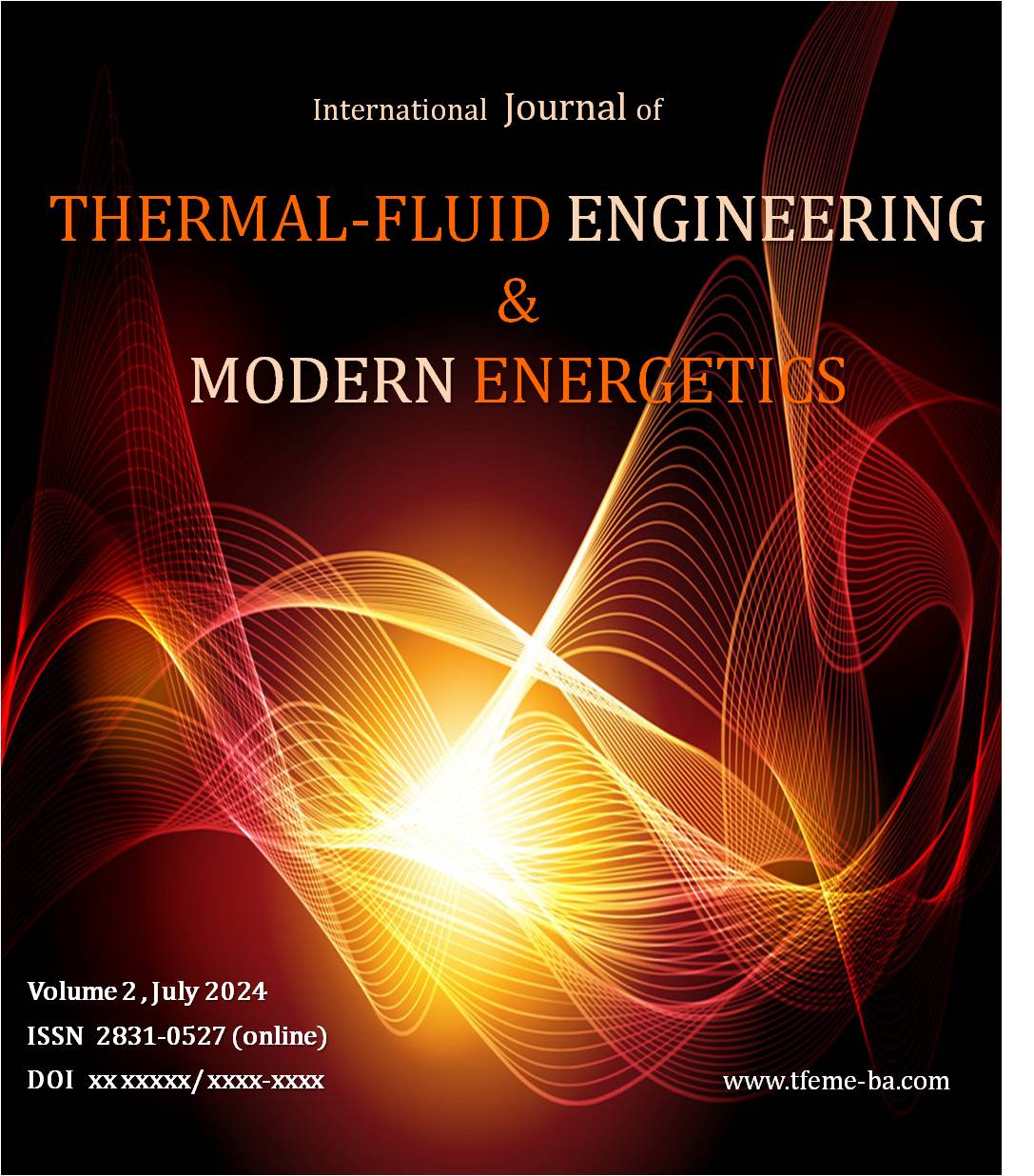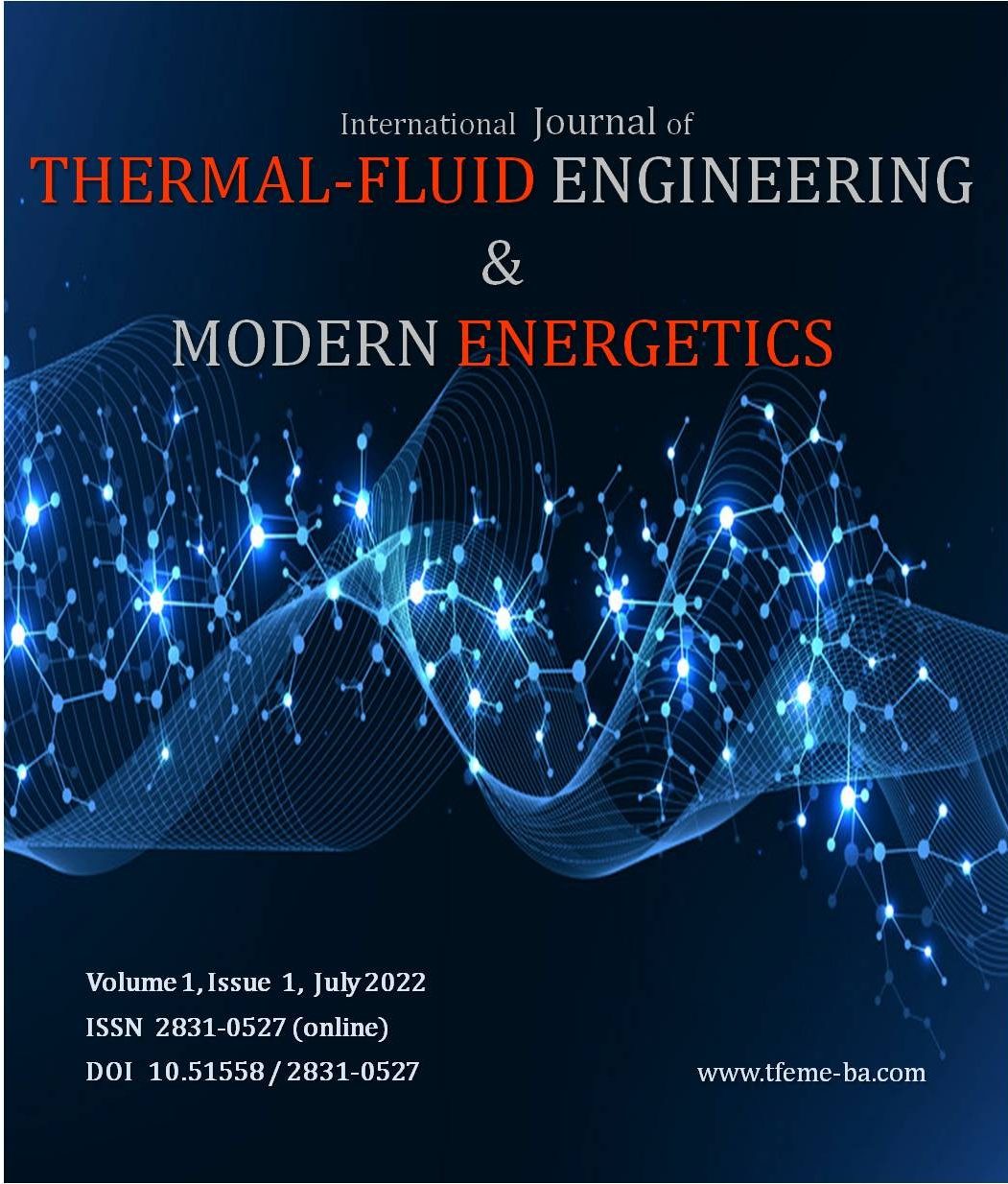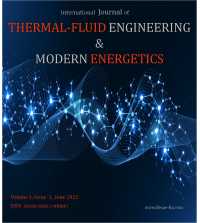INTERNATIONAL JOURNAL OF THERMAL-FLUID ENGINEERING AND MODERN ENERGETICS e-ISSN: 2831 - 0527

All manuscripts should be submitted through the TFEME Journal online submission system to June 28, 2024.
Submissions should follow the manuscript format guidelines for the TFEME Journal.
To ensure that all manuscripts are correctly identified it is important to select type when you reach the “Article Type” step in the submission process.
Vol. 2. No.1. (2024)
In Press, Journal Pre-proof, Available online 22 July 2024
Research articleAbstract only
Heat energy generated during friction stir welding influences
the joint geometry
Darko Veljic,, Bojan Medjo, Darko Bajic, Nenad Radovic
Abstract:
Abstract
This study deals with the analysis of heat
generation components (stemming from friction and plastic deformation) and
reaction force in vertical direction during the plunge stage of the friction
stir welding. Influence of the joint geometry is determined on butt joints and
T-joints fabricated from the same material, high strength Al alloy; on the
example of the T-joint, different tool rotation speeds and tool pin lengths are
considered.
The material temperature in the root of the weld below the tool pin is lower in the T-joint than in the butt joint, due to the efficient transfer of the generated heat energy through the vertical plate (stringer). The reaction force is higher for the T-joint than for the butt joint; as a consequence, heat generation by friction is more pronounced in comparison with the heat generation by plastic deformation. The reaction force is somewhat lower for the tool with shorter pin, which increases both components of the generated heat. Increase of the tool rotation speed decreases the resistance to the tool plunging into the T-joint, which decreases the friction-generated heat and increases the amount of heat generated by plastic deformation.
In Press, Journal Pre-proof, Available online
Research articleAbstract only
The external irreversibility within finned two
sections heating channel: Analytical approach
Fikret Alic
Abstract
During fluid flow through profiled convective channels, thermal and hydraulic irreversibilities occur simultaneously in different mutual ratios. The quantitative ratio of these irreversibilities depends on each case, and the value of this ratio can be many times higher than one. Forced air flow and heating of the fluid are established in the finned profiled channel, which consists of two axisymmetric and geometrically identical sections. The entire profiled housing is thermally insulated from the environment. The central heating element of constant heat flux simultaneously heats the longitudinal fins at their bottom. The total external entropy of the air in the inlet and outlet convective channel consists of the thermal and hydraulic. The total internal entropy includes only the thermal entropy, caused by the heat load of the fins and inter-fin surfaces in both sections. The relationship between entransy flow dissipation ratio and thermal entropy is analyzed using the new irreversibility ratio. The established mathematical model represents the basis for optimizing the geometric and process parameters of the analyzed heating system.
In Press, Journal Pre-proof, Available online 22 July 2024
Research articleAbstract only
Possibilities of using dissipative heat during
infrared heating - Combined approach
*Darko Veljic, Bojan Medjo,
Dragana Mihajlovic, Fikret Alic
Abstract
This work contains a brief overview of the
application of infrared heaters in different industry branches and a new solution
of a modular heating device with the nanofluid collector for efficient and
optimal usage of the infrared heat/energy. The system comprises two functional
sub-systems. The first one contains one or more detachable infrared heating
elements which jointly represent an infrared heat source with appropriate
power, spatial and geometry configuration. The second sub-system contains one
or more nanofluid collectors positioned in the vicinity of the first subsystem
with a heat source. The aim is to accumulate or utilise the emitted thermal
radiation which does not reach the heated body, as well as the portion of the
infrared energy emitted from the top side of the heaters. Different types of
the modular heating devices with nanofluid collectors will have different
fields of application, such as: heating of indoor spaces, drying, thermal
treatment during the painting (e.g. in car paint shops), heating of outdoor spaces,
thermal treatment of different products, in food industry (e.g. baking),
agriculture, etc.
In Press, Journal Pre-proof, Available online 22 July 2024
Research articleAbstract only
-------

